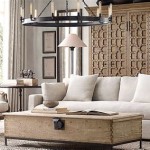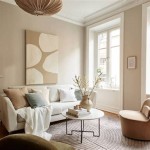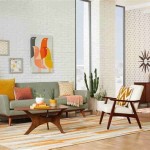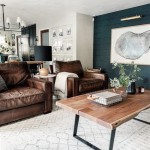Minimalist Living Room Design Ideas
Minimalist living room design focuses on simplicity, functionality, and creating a serene space free from clutter. It's about intentionally curating possessions and prioritizing essential items that contribute to the room's overall purpose and aesthetic. This design philosophy emphasizes clean lines, neutral color palettes, and a deliberate selection of furniture and decor to achieve a calming and uncluttered environment.
A minimalist living room is not simply an empty room. Rather, it’s a carefully considered space where every element serves a purpose, whether functional or aesthetic. The design aims to enhance the sense of openness and tranquility, promoting relaxation and a clear mental state. This approach requires thoughtful decision-making regarding the items that are brought into the space and a commitment to maintaining a clutter-free environment.
The core principles of minimalist design extend beyond aesthetics, influencing the way the space is used and experienced. By reducing distractions and visual noise, a minimalist living room can become a sanctuary for relaxation, conversation, and mindful living. It allows the inhabitants to focus on what truly matters – connection, comfort, and personal well-being.
Embracing Neutral Color Palettes and Natural Light
Color plays a crucial role in establishing the minimalist aesthetic. Neutral color palettes, such as whites, grays, beiges, and soft pastels, are fundamental to creating a sense of calm and spaciousness. These colors reflect light effectively, making the room feel brighter and more open. The use of a limited color palette also contributes to visual harmony and prevents the space from feeling overwhelming.
While a primarily neutral palette is common, the strategic use of subtle accent colors can add depth and interest to the room. These accent colors can be introduced through artwork, cushions, or other decorative items. However, it's important to limit the number of accent colors to maintain the overall minimalist feel. Think in terms of analogous color schemes or using different shades of the same color to create visual interest without disrupting the sense of calm.
Maximizing natural light is another crucial element in minimalist design. Large windows, skylights, and sheer curtains allow ample sunlight to fill the room, further enhancing the feeling of openness and airiness. Avoid heavy drapes or curtains that block natural light. If privacy is a concern, consider using light-filtering blinds or shades that allow light to enter while providing some level of coverage.
The interaction between natural light and the neutral color palette is essential to achieving the desired minimalist aesthetic. Natural light softens the edges of furniture and décor, creating a warm and inviting atmosphere. It also highlights the textures and materials used throughout the room, adding visual interest and depth.
Artificial lighting also deserves careful consideration. Choose simple, minimalist light fixtures that complement the overall design. Recessed lighting, track lighting, and pendant lights with clean lines are excellent options. Avoid ornate chandeliers or overly decorative lamps that may detract from the minimalist aesthetic.
Strategic Furniture Selection and Layout
Furniture selection in a minimalist living room is all about quality over quantity. Choose a few key pieces that are both functional and aesthetically pleasing. Look for furniture with clean lines, simple shapes, and durable materials. Avoid bulky or overly decorated pieces that take up unnecessary space and create visual clutter.
Prioritize comfort and functionality when selecting furniture. A comfortable sofa is essential for creating a welcoming space for relaxation. Choose a sofa with a neutral color and simple design. Add a few cushions and a throw blanket for added comfort and texture. Consider the size of the sofa in relation to the room. A large sectional sofa may overwhelm a small living room, while a smaller sofa may feel insignificant in a larger space.
Coffee tables, side tables, and media consoles should also be chosen with care. Look for pieces that offer storage solutions, such as drawers or shelves, to help keep the room clutter-free. Floating shelves can be a great alternative to bulky cabinets, creating a sense of lightness and openness. Opt for materials like wood, glass, or metal to complement the overall minimalist aesthetic.
The layout of the furniture is just as important as the furniture itself. Arrange the furniture in a way that promotes conversation and creates a sense of flow. Avoid overcrowding the room with too much furniture. Leave plenty of open space for movement and visual breathing room. Consider the focal point of the room, such as a fireplace or a large window, and arrange the furniture accordingly.
Rugs can add warmth and texture to a minimalist living room. Choose a rug with a simple design and a neutral color palette. A large rug can help define the seating area and anchor the furniture. Alternatively, a smaller rug can be used to add a pop of color or pattern without overwhelming the space. Ensure that the rug is appropriately sized for the room and the furniture arrangement.
Decluttering and Organization Strategies
Decluttering is a fundamental aspect of minimalist living room design. The goal is to eliminate unnecessary items and keep only those that are essential or bring joy. This process requires a mindful approach to possessions and a willingness to let go of items that no longer serve a purpose.
Start by identifying items that are rarely used or no longer needed. These items can be donated, sold, or discarded. Be honest with yourself about the value of each item and whether it truly contributes to your well-being. Consider the functionality and aesthetic appeal of each item, and ask yourself if you would replace it if it were gone.
Once you have decluttered the room, it's important to establish an organization system to prevent clutter from accumulating again. Utilize storage solutions such as baskets, boxes, and shelves to keep items neatly organized and out of sight. Designate specific areas for different types of items, such as books, magazines, and electronic devices.
Regularly maintain the organization system by putting items back in their designated places after use. Make it a habit to declutter the room on a regular basis, such as once a week or once a month, to prevent clutter from building up. This will help maintain the minimalist aesthetic and promote a sense of calm and order in the living room.
Consider implementing a "one in, one out" policy, where for every new item that is brought into the room, an old item is removed. This helps prevent the accumulation of clutter and ensures that the number of possessions remains manageable. Be mindful of the items that you bring into the space and choose them intentionally based on their functionality and aesthetic appeal.
Digital decluttering is also important. Reduce the amount of paper clutter by scanning documents and storing them electronically. Use digital organizers and calendars to manage schedules and appointments. Streamline your media consumption by subscribing to digital streaming services and minimizing the number of physical DVDs and CDs. By decluttering both physical and digital spaces, a more serene and minimalist living room can be achieved.
Incorporating storage solutions that blend seamlessly with the minimalist aesthetic is vital. Built-in shelving, hidden compartments, and multi-functional furniture can provide ample storage without disrupting the clean lines and uncluttered feel of the room. Select storage containers that are visually appealing and complement the overall color palette and design of the space.
Finally, remember that minimalism is a journey, not a destination. It takes time and effort to declutter, organize, and maintain a minimalist living room. Be patient with yourself and focus on making small, sustainable changes over time. The benefits of a minimalist living room, such as increased relaxation, reduced stress, and improved focus, are well worth the effort.

30 Minimalist Living Room Ideas

17 Minimalist Living Room Design Ideas Extra Space Storage

30 Minimalist Living Rooms Furniture Ideas For

Minimalist Living Room Decor

12 Minimalist Living Room Ideas My Bespoke

30 Minimalist Living Room Ideas

13 Scandinavian Living Room Ideas For Calm And Cozy Interiors

Living Room Decor When Less Is More Alma De Luce

How To Choose Wall Art For A Warm Minimalist Living Room Diy Home Decor Your Family

19 Minimalist Design Ideas For A Stylish Clutter Free Home Extra Space Storage








